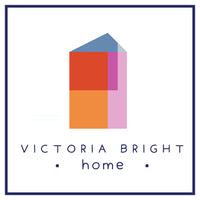How to Apply Non-Pasted Wallpaper
Non-Pasted Wallcovering (Professional Installation Recommended)
If you are looking for a professional wallpaper installer, please consult the Wallcovering Installers Association online for someone near you!
Tools
Proper primer, 4-ft level, pencil, wallpaper squeegee or brush, flat horizontal surface, sharp cutting tool like a box cutter, long straight edge, rollers or brushes and trays for applying primer and adhesive, extra razor blades for cutting, ladder if needed.
1. Surface Preparation
Ensure surfaces are clean, smooth, dry, free of mold/mildew, and structurally intact. Walls should not exceed 4% residual moisture content. Apply a wallpaper primer. We recommend Roman PRO-997 Ultra Primer - two coats. Allow each to dry overnight. For porous surface first seal with one coat of Roman PRO-999 (Rx-35) Primer before regular priming, and allow to dry overnight.
2. Wallcovering Adhesive Application
Adhesive paste: Hang wallcovering with a premium quality heavy-duty clear pre-mixed adhesive. We recommend Roman Ultra Clear Adhesive PRO-880 or ECO 888. Apply an even coat over the entire back of the wallcovering, especially near the edges. Gently fold each end toward the middle, paste sides together, and align edges together so they do not dry out. 'Book' the material for ten minutes before installation. Do not crease the wallpaper.
3. Wallcovering Installation
Plan and decide which side of the wall you will start hanging the wallpaper. Use a 4-foot level and draw a plumb line vertically from the top to the bottom of the wall 24 inches out from the corner you are starting with. This will be your visual guide to ensure your first panel is aligned. A laser level can be used as well.
Hang the first panel after properly 'booking' the wallpaper as instructed in the section above. Start by applying the first wallpaper panel 2 inches above the ceiling level and ensuring you leave the other 2 inches at baseboard level.
Alignment: Because most walls are not straight, ensure the edge of your first panel is aligned with the plumb line you drew. This panel alignment is crucial as it will guide the remaining panels. Using a wallpaper brush or similar, gently smooth the paper down brushing from the middle out to the sides to remove any air bubbles. Do not pull or tug harshly on the paper and stretch it. If you have trouble with any one spot you can gently peel the wallpaper up and smooth it down again. Read the instructions on the adhesive can to see how much working time you have before it sets.
Trim excess wallpaper from the top and bottom of the wall using a very sharp blade and a straight edge. Hold the straight edge firmly in place and be careful while cutting. Blades should be changed frequently to ensure a clean cut.
Repeat the process with the second panel; this time make sure you overlap the wallpaper to match the design about 1/2 inch. Then double-cut the overlap and join the seams back together. This will provide a perfect clean and professional look. Here is where professional installation shines - they have the expertise to complete this step.
Do not allow the adhesive to dry on the surface of the wallpaper as it may leave a white residue. Wash off the excess paste as you hang each panel with a cellulose sponge, rinsing it frequently in clean water and wringing it out. Blot the surface of the wallpaper dry with a clean cloth.
This information has been supplied in good faith but without guarantee. Site conditions are beyond our control and it is the responsibility of the customer to ensure that the environment is suitable for wallpaper installation.
